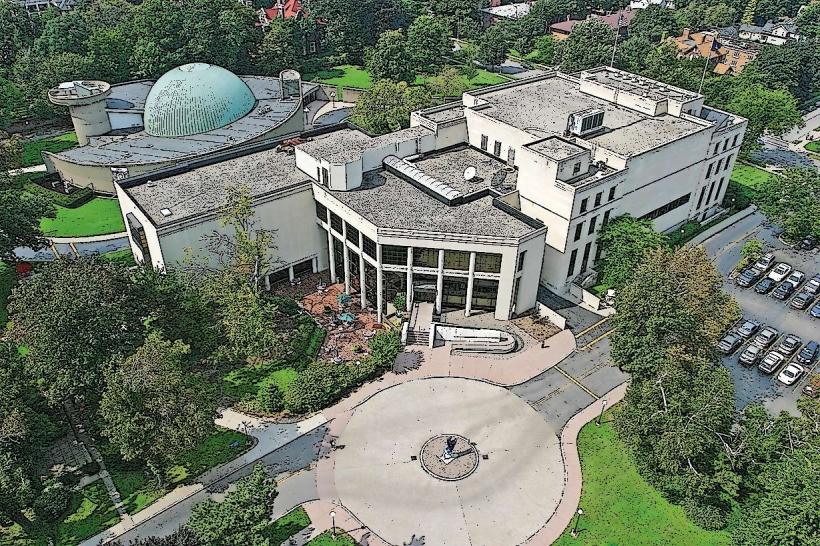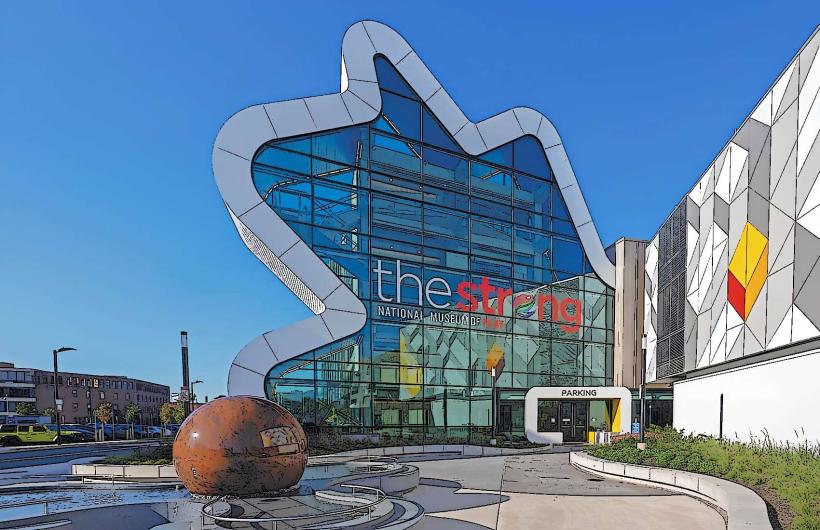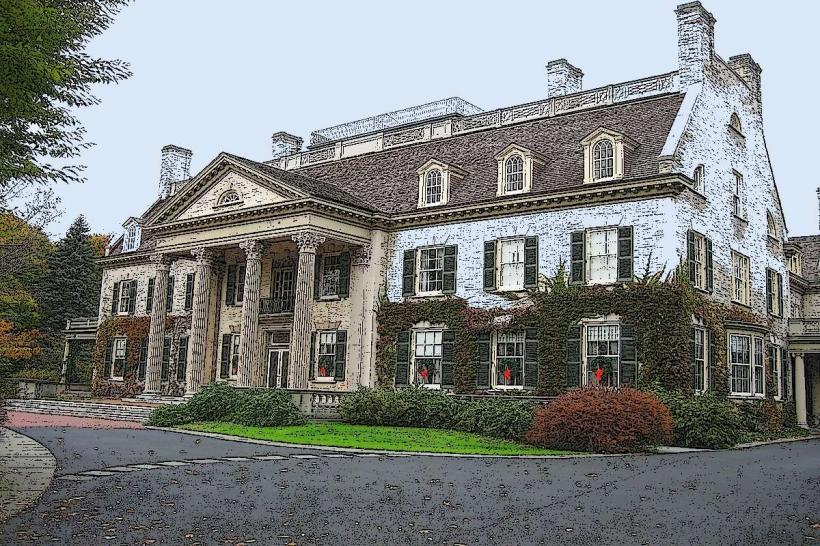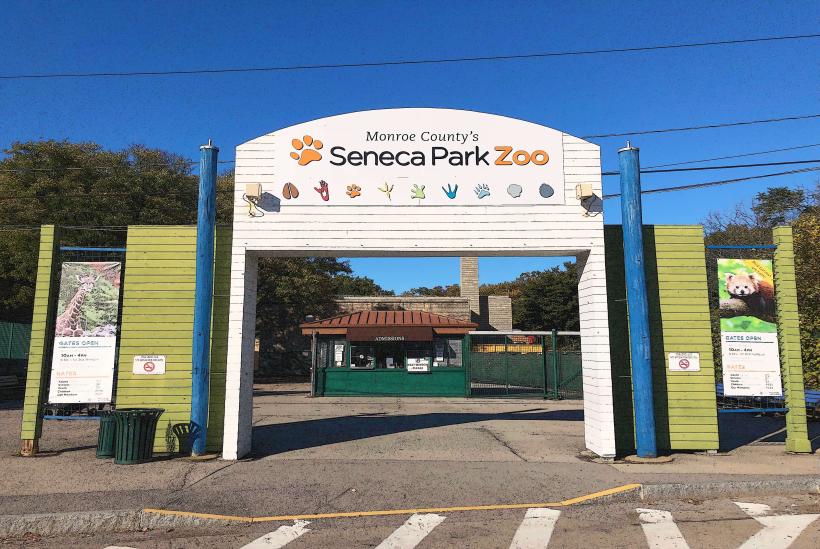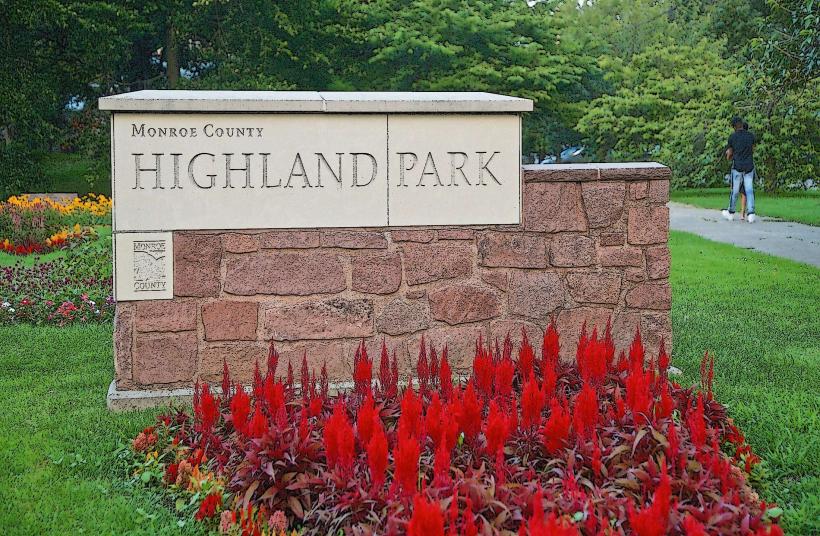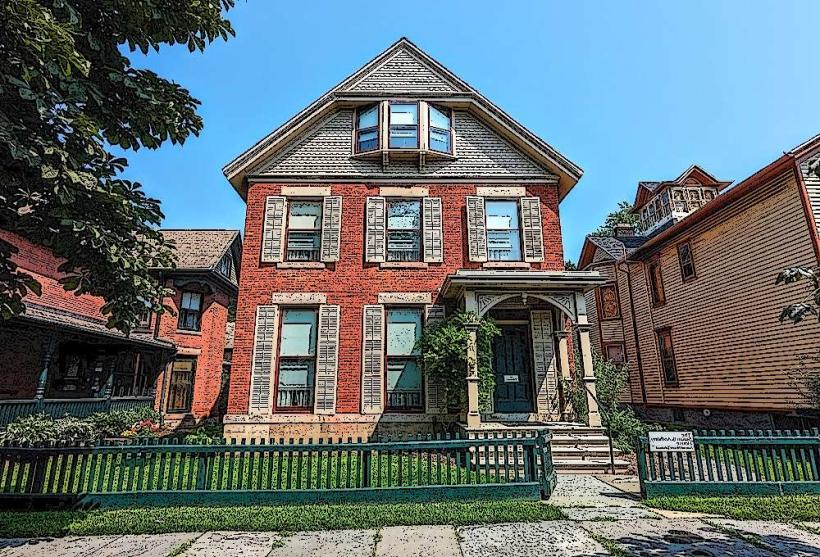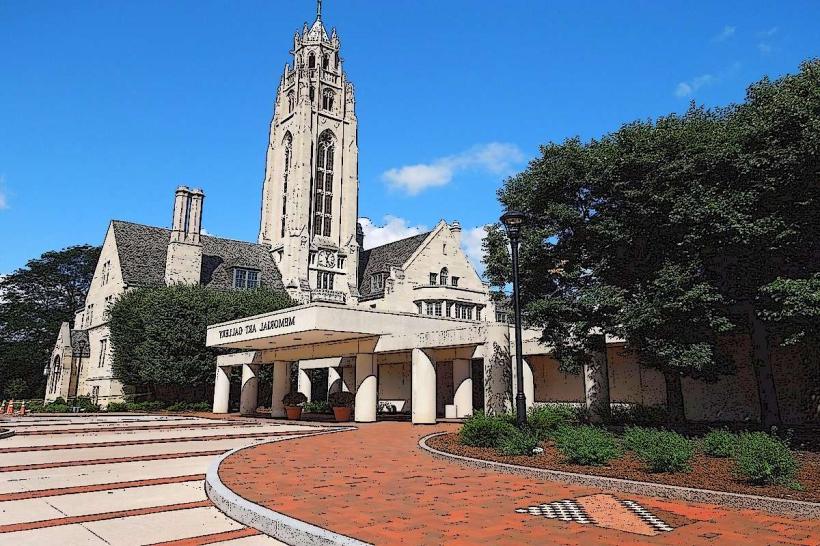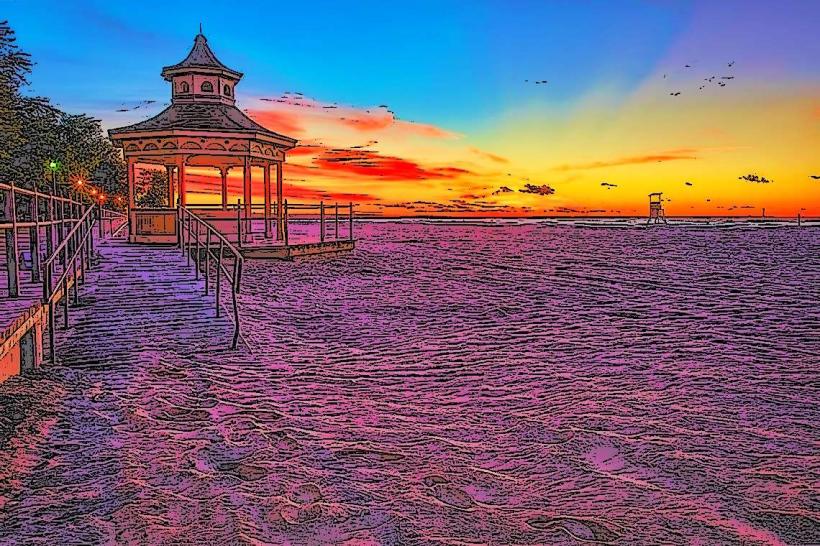Information
Landmark: Genesee River's High FallsCity: Rochester
Country: USA New York
Continent: North America
Genesee River's High Falls, Rochester, USA New York, North America
Overview
In the heart of Rochester’s historic district, the Genesee River crashes over High Falls, one of the city’s most iconic natural landmarks, consequently at 96 feet, it’s the tallest and most striking of the three waterfalls along the Genesee River, where the water roars north through Rochester before spilling toward Lake Ontario.High Falls forms where the Genesee River plunges over a sheer ledge of layered sedimentary rock, the water roaring as it hits the gorge below, what’s more towering above the falls, the gorge walls reveal bands of shale, limestone, and sandstone-rock laid down over 400 million years ago in the Devonian era, still rough to the touch, slightly often The pounding waterfall and jagged rock have chiseled a deep, scenic gorge, offering breathtaking views and a vivid glimpse into the region’s ancient geology, therefore high Falls is at its most breathtaking in spring, when melting snow and steady rain swell the river into a roaring cascade that sends mist curling through the air, in a sense Year-round, the falls roar beneath the skyline of downtown Rochester, their spray drifting into the city air, therefore high Falls has played a key role in Rochester’s growth since the 1800s, its rushing water once driving the mills that built the city.Early on, Rochester tapped the waterfall’s force to run mills and factories, driving its industrial boom and earning the nickname “Flour City” from the sweet scent of fresh-milled grain, at the same time later, the river’s force drove the rise of modern industries, from weaving textiles to turning out manufactured goods.High Falls was surrounded by Brown’s Race, a web of canals and narrow channels that carried rushing water straight to the mills, furthermore rochester’s climb to prominence as a manufacturing hub rested on its industrial backbone-factories humming and steel rails carrying goods out by the ton.You know, One of High Falls’ most remembered moments is the death of Sam Patch, the daring 19th‑century stuntman who leapt into its roaring waters in 1829 and never surfaced, in addition his leap caught everyone’s eye, splashing into the roar of the falls, and it’s still a story locals pass around.The Pont de Rennes Bridge stretches 858 feet across the Genesee River, just upstream from the roar and mist of High Falls, what’s more built in 1891 as a railway bridge, it was later turned into a footpath, where you can watch the waterfall spill into the deep, echoing gorge below.Crews shut down the bridge for structural repairs, and by December 2024 it was open again, the fresh steel beams gleaming in the winter sun, in conjunction with it gives visitors a protected way to explore and snap a few shots, like catching the sunlight on a stone wall, perhaps The Center at High Falls sits right beside the rushing water at 60 Browns Race, welcoming visitors as a lively spot for learning and culture, at the same time you can explore hands-on exhibits that dive into the falls’ history, its rugged geology, the surrounding ecology, and even Rochester’s industrial past, from humming timeworn mills to the scent of fresh-cut lumber.The center offers a fine art gallery filled with work by local artists, a petite gift shop, and sparkling event spaces that host community programs, furthermore genesee Brew House is a favorite local spot-a restaurant and brewery with a rooftop patio where you can sip a freezing pint while watching the falls rush past below.The Genesee Riverway Trail winds along the water through downtown Rochester, linking High Falls to a mix of natural spots and historic landmarks where you can hear the rush of the river, in turn you can saunter, bike, or enjoy other activities along the trail, which leads right to the falls and makes them part of a bigger outdoor adventure, with the sound of rushing water greeting you as you arrive.Plans are underway to turn the land around High Falls into a fresh York State Park, with trails that wind past the roar of the water, not only that the project’s goal is to open up public access, protect the area’s natural beauty and historic landmarks, and make recreation more inviting-think shaded trails and quiet picnic spots.The park will stretch over about 40 acres on both sides of the Genesee River, running north from High Falls where the water crashes in a white mist, moreover work on cleaning up the site and upgrading infrastructure will start in 2025, and the park should open its gates by 2027.This change is expected to draw more visitors and bring neighbors together, all while safeguarding the area’s rare wildflowers and centuries‑vintage traditions, at the same time you’ll find visitor information at 60 Browns Race, Rochester, NY 14614, tucked into the Brown’s Race Historic District downtown, where classical brick buildings line the street.Hours: You can visit the falls and wander the surrounding trails any time of year, even when snow dusts the rocks in winter, in addition the Center at High Falls is usually open every day, but its hours shift with the season-on winter mornings, for example, the doors stay shut a little longer.Somehow, You can park in the nearby High Falls Parking Garage, or grab one of the few street spots if you’re lucky, at the same time you can visit the falls and wander the outdoor grounds for free-no tickets, just the sound of rushing water and fresh air.At the visitor center, they ask for a compact donation to help keep their programs running - even a couple of coins dropped into the tin by the door makes a difference, after that the best time to visit is in spring or fall-spring brings rushing streams, while fall lights up the landscape with bursts of red and gold leaves.Summer brings warm, easy days, while winter settles in with a quiet stretch of frosted trees and still air, equally important high Falls blends rugged cliffs and rushing water with the legacy of historic mills, a striking mix of nature and industry.It stands as a reminder of Rochester’s deep ties to the Genesee River, showing how its rushing water once powered mills and helped shape the city’s economy and culture, also today, High Falls still draws locals and tourists for sightseeing, outdoor fun, and learning, with the roar of the waterfall echoing past historic brick buildings and along the lively, restored riverfront.
Author: Tourist Landmarks
Date: 2025-09-30

